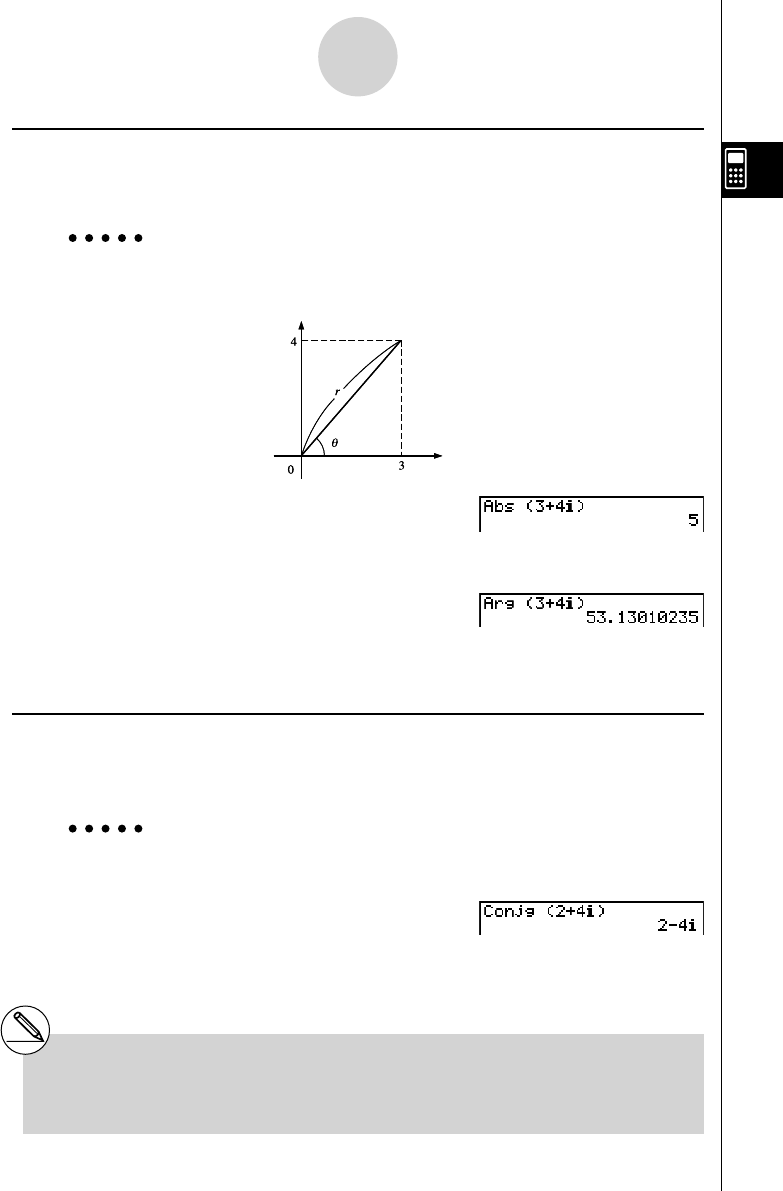User's Manual
Table Of Contents
- Quick-Start
- Precautions when Using this Product
- Contents
- Getting Acquainted— Read This First!
- Chapter 1 Basic Operation
- Chapter 2 Manual Calculations
- Chapter 3 List Function
- Chapter 4 Equation Calculations
- Chapter 5 Graphing
- 5-1 Sample Graphs
- 5-2 Controlling What Appears on a Graph Screen
- 5-3 Drawing a Graph
- 5-4 Storing a Graph in Picture Memory
- 5-5 Drawing Two Graphs on the Same Screen
- 5-6 Manual Graphing
- 5-7 Using Tables
- 5-8 Dynamic Graphing
- 5-9 Graphing a Recursion Formula
- 5-10 Changing the Appearance of a Graph
- 5-11 Function Analysis
- Chapter 6 Statistical Graphs and Calculations
- Chapter 7 Financial Calculation (TVM)
- Chapter 8 Programming
- Chapter 9 Spreadsheet
- Chapter 10 eActivity
- Chapter 11 System Settings Menu
- Chapter 12 Data Communications
- Appendix

20070201
2-6-3
Complex Number Calculations
# The result of the argument calculation differs
in accordance with the current angle unit
setting (degrees, radians, grads).
k Absolute Value and Argument [OPTN] - [CPLX] - [Abs]/[Arg]
The unit regards a complex number in the form a + b i as a coordinate on a Gaussian plane,
and calculates absolute value
⎮
Z
⎮
and argument (arg).
Example To calculate absolute value (
r ) and argument ( θ ) for the complex
number 3 + 4 i , with the angle unit set for degrees
Imaginary axis
Real axis
A K 3 (CPLX)2 (Abs)
(d+e 1 (
i )) w
(Calculation of absolute value)
A K 3 (CPLX)3 (Arg)
(d+e 1 ( i )) w
(Calculation of argument)
k Conjugate Complex Numbers [OPTN] - [CPLX] - [Conj]
A complex number of the form a + b i becomes a conjugate complex number of the form
a – b i .
Example To calculate the conjugate complex number for the complex number 2
+ 4
i
A K 3 (CPLX)4 (Conj)
(c+e 1 (
i )) w










